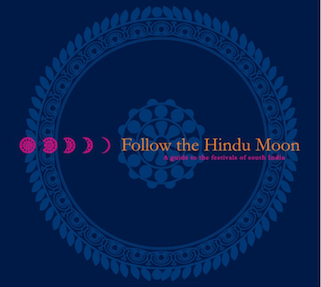|
The Indian Analyst
|
South Indian Inscriptions |
PART-I SANSKRIT INSCRIPTIONS I. Inscriptions of the Pallava Dynasty The
village of Mamallapuram[1],
generally called âThe Seven Pagodas,â is situated on the
seacoast, thirty-two miles south of Madras, and Saluvankuppam two
miles north of Mamallapuram. Both places are famous for their
Pallava remains, which have been often described.[2]
Their Sanskrit inscriptions, however, have not hitherto been
properly deciphered. The subjoined transcripts are prepared from
mechanical copies made on the spot in December 1886. Four
different alphabets are employed in the Pallava inscriptions of
Mamallapuram and Salvankuppam. The first, very archaic alphabet is
found in the following inscriptions Nos.1 to 16 of the so-called
Dharmaraja Ratha. The bulk of the Mamallapuram inscriptions, viz.,
those of the so-called Ganesa Temple, Dharmaraja Mandapa and
Ramanuja Mandapa and the inscription No.17 of the Dharmaraja Ratha,
are written in the second, an extremely florid character. The third
alphabet occurs on the northern, and the fourth on the southern wall
of the Atiranachandesvara Temple at Salvankuppam. Dr. Burnell
assigns the first alphabet to about the fifth century, the second to
about 700, the third to the eighth or ninth century and the fourth
to the eleventh century A.D. To this I have only to add, that the
second alphabet probably belongs to the sixth century, as it
resembles that of Rajasimhaâs and Mahedravarmanâs inscriptions
at Kanchipuram. The
first sixteen inscriptions of the Dharmaraja Ratha consist of a
string of words in the nominative case, which their first
decipherers, Drs. Babington and Burnell, took for names of deities.
From a comparison with the remaining inscriptions, where several of
them recur, it follows, however, that they are birudas of
a Pallava kind Narasimha (Nos. 1 and 7). Among these birudas,
Atyanktakama, Srinidhi and Sribhara were also borne by the two kings
mentioned in the later inscriptions of Mamallapuram and
Saluvankuppam. Other birudas reappear in the
inscriptions of the Pallava king Rajasimha at Kanchi, viz., Parapara,
Bhuvanabhajana, Srimegha, and Sarvatobhadra. Two
of the inscriptions, which are written in the second alphabet, viz.,
that of the Ganesha Temple and that of the Dharmaraja Mandapa, are
identical and consist of eleven verses. They record, that the two
temples, at which they are found, were built by a kind Atyantakama
and were called after him Atyantakama â Pallavesvara-griha. The
kind bore the birudas of Ranajaya, Srinidhi and Sribhara.
The
fragmentary inscription at the Ramanuja Mandapa consists of the last
verse of the two last-mentioned inscriptions. Consequently, it seems
to have been a third inscription of Atyantakama. From
the last inscription in the second alphabet (No.17 of the Dharmaraja
Ratha) it appears, that Atyantakama appropriated to himself the
Dharamaraja Ratha, which had been excavated by his predecessor
Narasimha, and called it Atyantakama-Pallavaves-vara-griha. He also
added his own biruda Ranajaya to those engraved by Narasimha. 1.From
the inscription on the northern wall of Saluvankuppam Cave is a
later transcript of that on the northern wall. It adds seventh
verses we learn, that the temple was built by a King Atirnachanda
and was called after him Atiranachandesvar. The kind bore the biruds
Atyantakama, Ranajay, Srinidhi and Sribhara, all but the third
of which occur in the Kanchi inscriptions. 4.The inscription on the southern wall of the Saluvankuppam Cave is later transcript of that on the northern wall. It adds a seventh verse and the four birudas Anugrasila, Kalakala, Samardhandhamjaya, thee three first of which are also found in the Kanchi inscriptions. Over the entrance, the name of the temple, Atiranachandra-Palla [ vesvara-griha ], is engraved in both alphabets. The Rev. E. Loventhal of Vellore possesses a fair number of Pallava coins from Mamallapuram. All of them bear on the obverse a Nandi and various legends over it. One of the coins, with a star on the reverse,[3] reads: another, with a fish on the reverse, and a third, with a cross on the reverse. It will be remembered, that Sribhara and Srinidhi were bridas of the Pallava King Narasimha, who founded the Dharamaraja Ratha. Translation (Verse 1.) May (Siva) the destroyer of Love, who is the cause of production, existence and destruction, (but is himself) without cause, fulfill the boundless desires[4] (2.) May he (Siva) be victorious, who is without illusion and possessed of manifold illusion, who is without qualities and endowed with qualities, who is existing by himself and is without superior, who is without lord and the highest lord! (3.) Srinidhi[5] bears on his head the unborn (Siva)[6], by the weight of whose great toe Kailsa together with the ten-faced (Ravana) sank down into Patala. (4.) May Sribhara[7] be victorious for a long time, who bears Bhava (Siva) in his mind which is filled with devotion, and bears the earth on his arm like a coquettish embellishment!
| ||||||||||||||||||||||||||||||||||||||||||||||||||||||||||||||||||||||||||||||||||||||||||||||||||







